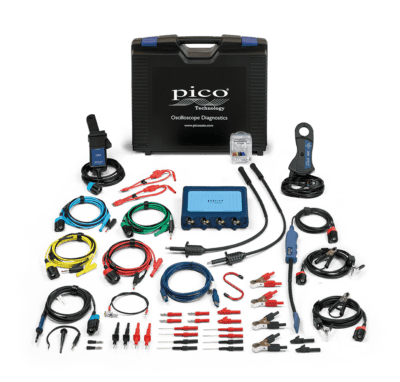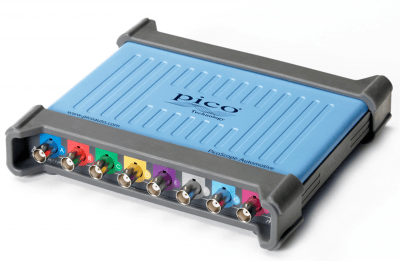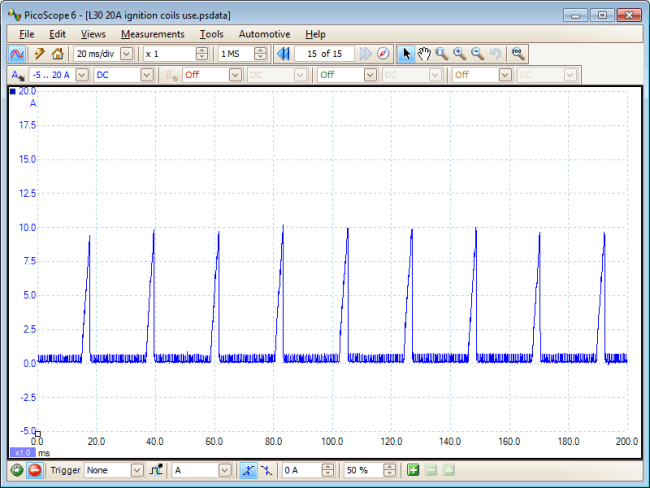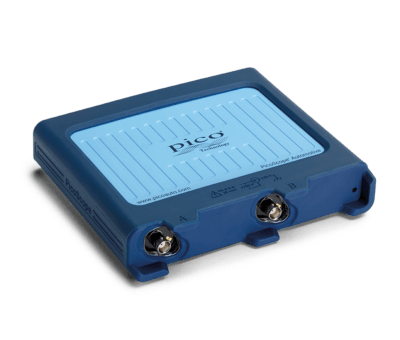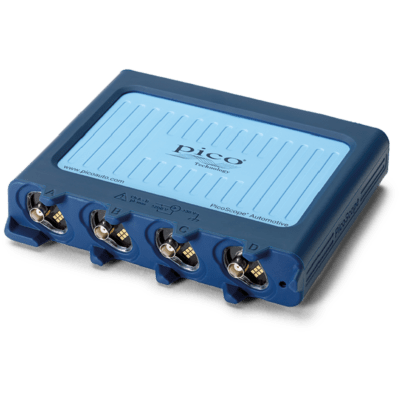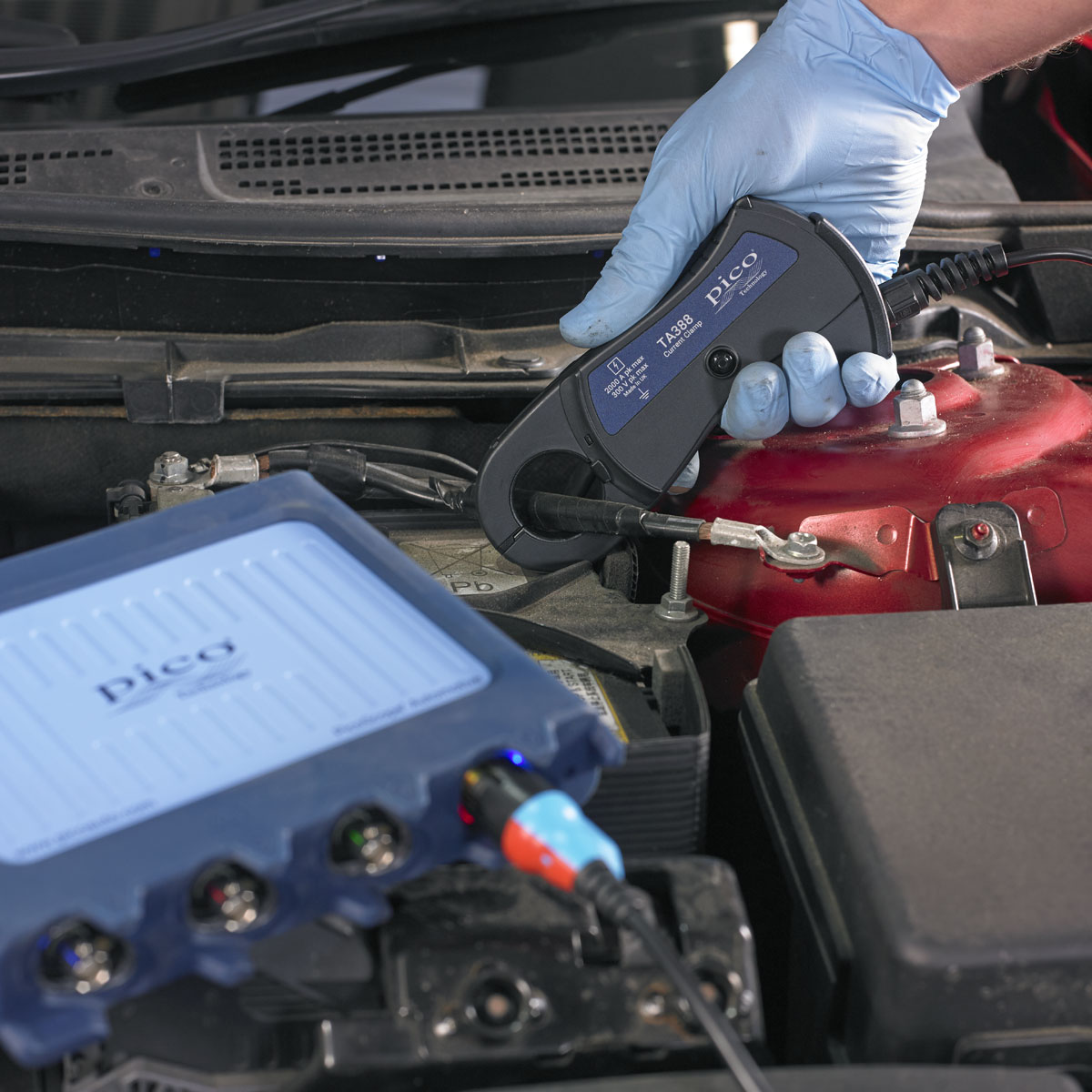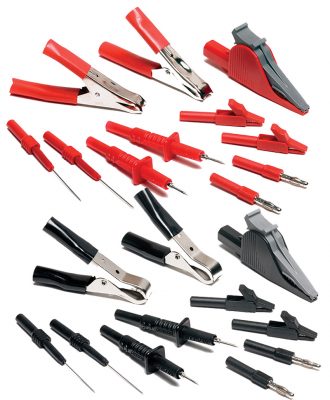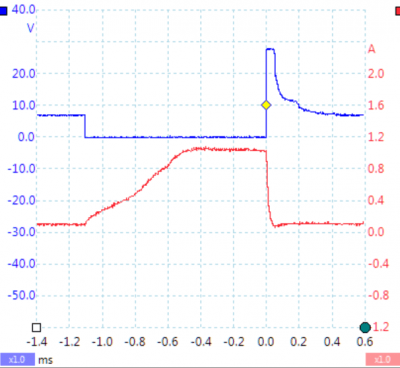Introduction to the PicoScope Automotive Oscilloscope



Automotive Oscilloscope Kits containing a PicoScope
What is an Automotive Oscilloscope and why do I need one?
An automotive oscilloscope (scope) is a simple device. All it does is draw a graph of a value (e.g. voltage, current, pressure, sound) vs time. The PicoScope is a storage scope so it draws the graph (actually up to four at the same time) and remembers it so that you can study what happened after the event occurs.

An Automotive PicoScope turns your laptop or desktop PC into a powerful diagnostic tool. Think of it as the X-ray machine of diagnostics, letting you see the changing signals inside wires.
In order to use our automotive oscilloscopes, you will need a PC and some test leads to connect to the vehicle. Most customers purchase one of our award winning Automotive Diagnostics Kits. These money-saving kits contain everything you need. Please consider the 2 or 4-Channel Starter or Diagnostic Kits or one of the more advanced kits, listed on the right, rather than purchasing the oscilloscope on its own.
4x25A 2 and 4-Channel Automotive Oscilloscope Kits
Our 4225A 2-Channel Automotive Oscilloscope is a really good choice for specific applications that need only 2 channels as well as for those with budgetary constraints. However, please consider choosing the 4425A 4-Channel Automotive Oscilloscope or a kit that contains it, because it is far more useful and a better long-term investment. Kits can be upgraded by purchasing extra components but a 2-Channel scope cannot.
We can also supply you with a range of suitable desktop and laptop PCs. You can use any suitable Windows-based laptop or PC that you may have.
PicoScope Contents
These items are usually supplied with your PicoScope when it is bought on its own. When you purchase a kit containing a PicoScope, these items are also included.
- Oscilloscope
- USB Cable
- User Manuals
- Software CD-ROM
The 4x25A 2 and 4-Channel PicoScopes are best-suited for general workshop diagnostics use.
Also see the new 4823 8-Channel Automotive Oscilloscope and the 4823 8-Channel Professional Kit.
Learn more about how scopes work with our free, Online Demo-mode Course as well as watching some of our Videos to see the PicoScope and its accessories in operation.
How does the Automotive Oscilloscope know when to draw the Graph?
By default, the Automotive Oscilloscope draws graphs continuously. This happens when no trigger is defined (select none).
You can configure your PicoScope to start drawing a graph when it is triggered. Some event occurs e.g. an injector closes (see right), the cam sensor detects TDC, the ignition key is turned, the headlights are turned on - you decide. The scope draws the graph and you can analyse what happened.
Being a storage scope, the Picoscope has another huge advantage. It continually monitors what is happening and stores and displays the graph as soon as it is triggered. This means that it can even display what happened before it was triggered. Think of a DSTV Explora or PVR Decoder which allows you to rewind live TV. Your PicoScope allows you to look back in time and find out what caused the event.
Can I control what I see?
Absolutely! You can decide how long the scope records for and how much detail you want. You can filter the graph to highlight certain events or problems and change the scale. Compare your graph with other similar graphs to highlight any differences to help you identify faults. PicoScopes have libraries of waveforms that you can access.
The trace in the case study below shows 70% of the display is dedicated to time before the trigger. Choose where to place the trigger on the display.
Why is a PC necessary?
Your Picoscope uses a PC or laptop computer as its display. This has many major benefits. PCs have high resolution displays and lots of storage. Examine your waveforms in minute detail and save them to create a knowledge-base. Email them if you need help and compare them to waveforms downloaded from the Internet. Print your test results to show your customers where problems were and how they were solved. You can watch training videos, follow test set-up instructions and access our comprehensive Help to increase your efficiency.
Whilst the PicoScope is a sophisticated data capture system with many functions and features, it does not have any controls. Simply think of it as the place to plug in your test leads. You only interact with the PC and everything is controlled from there.
When you buy a PicoScope Automotive Oscilloscope, you only pay for an instrument optimised for automotive diagnostics. Oscilloscopes with built-in high quality displays are very expensive. PCs are optimised for storage, processing, communication and display. We believe in giving you the choice, PicoScope allows you to build a diagnostic system that suits your business.
I use a multi-meter, why do I need a PicoScope?
A multi-meter can measure static values such as the battery voltage, current through a lamp, resistance of a coil and continuity. A PicoScope can show how things change. It can also measure things that happen very quickly, such as spikes, ignition pulses, etc.
The new Automotive PicoScopes have a bandwidth of 20MHz (20 million cycles per second) and a sampling rate of up to 400 million samples per second. 250 million samples of 4,096 levels can be accommodated in its buffer. A multi-meter has many applications but cannot replace the functionality of and insight provided by a PicoScope.
The PicoScope has enormous storage capability and can also be used to look at things that happen very slowly (e.g. hours). Find that elusive, intermittant fault by looking back through the PicoScope's waveform buffer.

